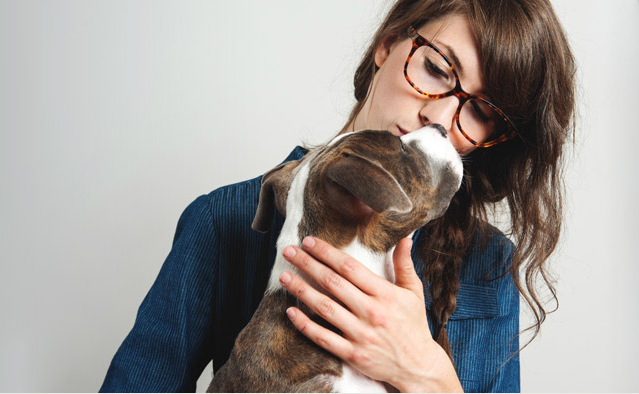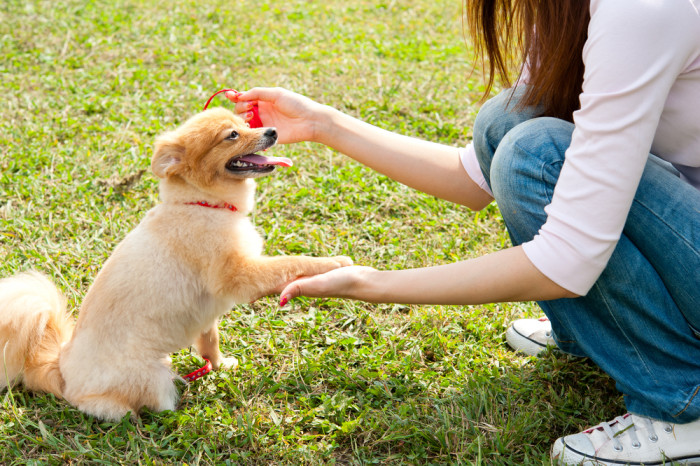
When you adopt a dog, you know they come with a history. She may have had no human contact until she was rescued, or maybe the only contact was abusive. Dogs with histories like this can be unresponsive to training, which frustrates their new owners and result in a return trip to the shelter.
If something like this happens, it’s usually because we humans have forgotten that the dog we are trying to train may not even understand the concept—they don’t know how to learn.
Learned Helplessness
Some animals go into a state of “learned helplessness” after being mistreated for a length of time when there was no escape. Instead of trying to get away, they give up and just “take it.” When these same dogs are then released and given the option to do something, they don’t. Instead, they sit and wait for the “shock.” (Theunboundedspirit.com)
These are the types of dogs that most likely just sit in front of their new owner, without moving or offering to do anything. Why should they? They don’t know when the next punishment will occur or why it will happen, so they have learned to not do anything.
Just Don’t Know
Other dogs may not know how to listen to a human or understand why they should. These dogs are often labeled as “stubborn” or “dumb,” because they either seem to know something but won’t do it, or appear stupid and unable to learn the behavior.
In both instances, however, it could just be that your dog doesn’t know how to learn from a human or understand what you are asking.
Start Simple
Whatever the reason for lack of engagement from your dog during sessions, you need to start easy, with almost no criteria, so the dog can start getting things right and understand the rules to training.
The following are methods used by positive reinforcement trainers, often through the use of clicker training. If you are not familiar with clicker trainer, you can find some great getting started articles here.
Capturing
One way is to just wait and capture a behavior your dog does naturally that you think is cute/fun/useful. At this point it doesn’t have to be related to basic obedience (maybe your dog rolls over all the time, for example). You just want to start marking/rewarding behaviors so your dog can begin to understand that if he does something he may get a reward (rather than a punishment or nothing).

Remember to pick one behavior your dog is offering and only click that one during that session. Otherwise, your dog will think you are just randomly clicking and feeding and he won’t start grasping the idea that he needs to do something specific to get the reward. After a few minutes, you can take a break (play, pet him, etc.) and then resume and start marking/rewarding a different behavior.
Once you have captured a few behaviors, you can try to wait and see if your dog will offer a behavior you really wanted, such as sit, now that he has figured out the “game.”
Shaping
Shaping is when you reward a dog for doing smaller steps of a bigger behavior, building on those until he is doing the final, desired behavior. For example, you can shape a dog to shake by first marking/rewarding any paw movement. Then you may wait and only reward when he is making upwards paw movements. Then you may only reward when he is making upwards paw movements toward your hand. And finally, you would reward only when he picks up his paw and puts it in your hand.

A lot of positive reinforcement trainers like to use shaping exercises because it allows the dog to think for himself and it can help with more complicated behaviors. It can also really help a dog suffering from learned helplessness to start using his brain and move more freely.
Further Resources
Karen Pryor, Founder and CEO of Karen Pryor Clicker Trainer and Karen Pryor Academy, has some excellent articles on shaping that are great resources for anyone working on this with their dog.
In addition, working with a certified professional dog trainer that has experience with rescue dogs can really speed up the process, getting you results quicker. They will be able to assess your individual dog’s training needs and can come up with a way to overcome whatever happened in the past.
The nice thing about dogs is their ability to “bounce back” from even the worst forms of neglect and abuse. Stick with it, and your dog is sure to learn how to learn in no time.
About the Author
Based in Wilsonville, Ore., animal lover Kristina N. Lotz is a Certified Professional Dog Trainer – Knowledge Assessed (CPDT-KA). She is the founder of A Fairytail House. In her spare time, she trains and competes in herding, agility, obedience, rally, and conformation with her Shetland Sheepdogs. She smartly married a Veterinary Technician, who helps keep the fur kids happy and healthy, and provides a quick resource for articles.

